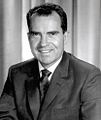
Presidential elections were held in the United States on November 2, 1948. Incumbent Democratic President Harry S. Truman defeated heavily favored Republican New York Governor Thomas E. Dewey, and third-party candidates, becoming the third president to succeed to the presidency upon his predecessor's death and be elected to a full term. It was one of the greatest election upsets in American history.

A Presidential election was held in the United States on November 4, 1952. Republican nominee Dwight D. Eisenhower defeated Democratic Illinois Governor Adlai Stevenson II in a landslide victory, becoming the first Republican president in 20 years. This was the first election since 1928 without an incumbent president on the ballot.

Presidential elections were held in the United States on November 6, 1956. Incumbent Republican President Dwight D. Eisenhower and his running mate, incumbent Vice President Richard Nixon, were reelected, defeating for a second time Democrat Adlai Stevenson II, former Illinois governor. This election was the second time in which the winner was the same both times, the first being William McKinley's victories over William Jennings Bryan in 1896 and 1900. This was the last election before term limits established by the Twenty-second Amendment to the United States Constitution, which first applied to Eisenhower, became effective.
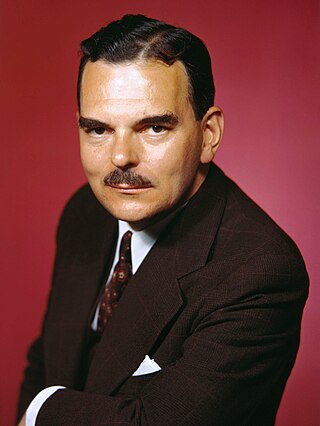
Thomas Edmund Dewey was an American lawyer and politician who served as the 47th Governor of New York from 1943 to 1954. He was the Republican Party's nominee for president of the United States in 1944 and 1948, losing the latter election to Harry S. Truman in a major upset. The 288 combined electoral votes Dewey received from both elections place him second behind William Jennings Bryan as the candidate with the most electoral votes who never acceded to the presidency.

William Fife Knowland was an American politician and newspaper publisher. A member of the Republican Party, he served as a United States Senator from California from 1945 to 1959. He was Senate Majority Leader from August 1953 to January 1955 after the death of Robert A. Taft, and would be the last Republican Senate Majority Leader until Howard Baker in 1981.
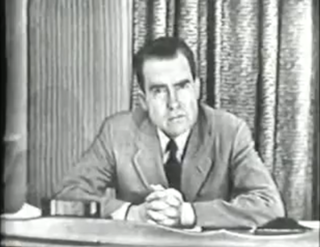
The Checkers speech or Fund speech was an address made on September 23, 1952, by Senator Richard Nixon (R-CA), six weeks before the 1952 United States presidential election, in which he was the Republican nominee for Vice President. Nixon had been accused of improprieties relating to a fund established by his backers to reimburse him for his political expenses. His place was in doubt on the Republican ticket, so he flew to Los Angeles and delivered a half-hour television address in which he defended himself, attacked his opponents, and urged the audience to contact the Republican National Committee (RNC) to tell it whether he should remain on the ticket. During the speech, he stated that he intended to keep one gift, regardless of the outcome: a black-and-white Cocker Spaniel that his children had named Checkers, thus giving the address its popular name.

The 1952 Republican National Convention was held at the International Amphitheatre in Chicago, Illinois from July 7 to 11, 1952, and nominated Dwight D. Eisenhower of New York, nicknamed "Ike", for president and Richard M. Nixon of California for vice president.
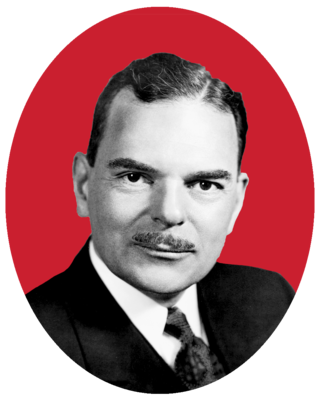
The 1948 Republican National Convention was held at the Municipal Auditorium, in Philadelphia, Pennsylvania, from June 21 to 25, 1948.
Guy George Gabrielson was a Republican politician from New Jersey. He served as chairman of the Republican National Committee from 1949 to 1952, and was a member of the New Jersey General Assembly from 1925 to 1929, and was its Speaker in 1929.

The Draft Eisenhower movement was a widespread political movement that eventually persuaded Dwight D. Eisenhower, former Chief of Staff of the United States Army, to contest the presidency of the United States.

The 1960 Republican National Convention was held in Chicago, Illinois, from July 25 to July 28, 1960, at the International Amphitheatre. It was the 14th and most recent time overall that Chicago hosted the Republican National Convention, more times than any other city.

Murray M Chotiner was an American political strategist, attorney, government official, and close associate and friend of President Richard Nixon during much of the 37th President's political career. He served as campaign manager for the future president's successful runs for the United States Senate in 1950 and for the vice presidency in 1952, and managed the campaigns of other California Republicans. He was active in each of Nixon's two successful runs for the White House in low-profile positions.
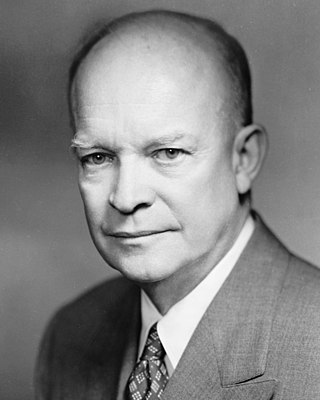
From March 11 to June 3, 1952, delegates were elected to the 1952 Republican National Convention.

From March 9 to June 1, 1948, voters of the Republican Party elected delegates to the 1948 Republican National Convention, in part to choose the party nominee for president in the 1948 United States presidential election.

Electoral history of Robert A. Taft, United States Senator from Ohio (1939–1953), United States Senate Majority Leader (1953) and a candidate for the 1940, 1948 and 1952 Republican presidential nominations.

The 1950 United States Senate election in California was held on November 7 of that year, following a campaign characterized by accusations and name-calling. Republican Representative and future President Richard Nixon defeated Democrat Representative Helen Gahagan Douglas, after Democratic incumbent Sheridan Downey withdrew during the primary election campaign. Douglas and Nixon each gave up their congressional seats to run against Downey; no other representatives were willing to risk the contest.

This article lists those who were potential candidates for the Republican nomination for Vice President of the United States in the 1960 election. After winning the Republican presidential nomination at the 1960 Republican National Convention, Vice President Richard Nixon needed to choose a running mate. President Dwight D. Eisenhower strongly supported UN Ambassador Henry Cabot Lodge Jr. Though Lodge lacked charisma as a campaigner, his foreign policy experience and stature as ambassador made him an appealing candidate. However, Lodge was unpopular with the Republican right, who did not want a Northeastern moderate on the ticket. Nixon also strongly considered conservative Minnesota Representative Walter Judd and moderate Kentucky Senator Thruston Morton. After a closed session with Republican Party leaders, Nixon announced his choice of Lodge. The Republican convention ratified Nixon's choice of Lodge. The Nixon–Lodge ticket lost the 1960 election to the Democratic ticket of Kennedy–Johnson.
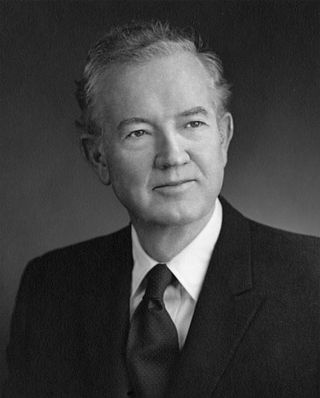
This article lists those who were potential candidates for the Democratic nomination for Vice President of the United States in the 1952 election. After winning the presidential nomination on the third ballot of the 1952 Democratic National Convention, Illinois Governor Adlai Stevenson consulted with Democratic Party leaders such as President Harry S. Truman and Speaker Sam Rayburn. Stevenson chose Alabama Senator John Sparkman, a Southern centrist, as his running mate. Sparkman won the vice presidential nomination on the first ballot as no serious rival tried to displace Stevenson's choice. However, many Northerners were not enthused with the choice of Sparkman due to Sparkman's stance on civil rights. During the 1952 convention, Sparkman, who had supported Senator Richard Russell for president, played a part in watering down the party's platform on civil rights. New York Representative Adam Clayton Powell Jr. and others walked out of the convention after the choice of Sparkman was announced. The Democratic ticket lost the 1952 election to the Republican ticket of Dwight D. Eisenhower and Richard Nixon.
In his political career, between the years 1938 and 1994, Harold Stassen, a Republican, ran many campaigns for public office. He was elected governor of Minnesota three times, in 1938, 1940, and 1942.

